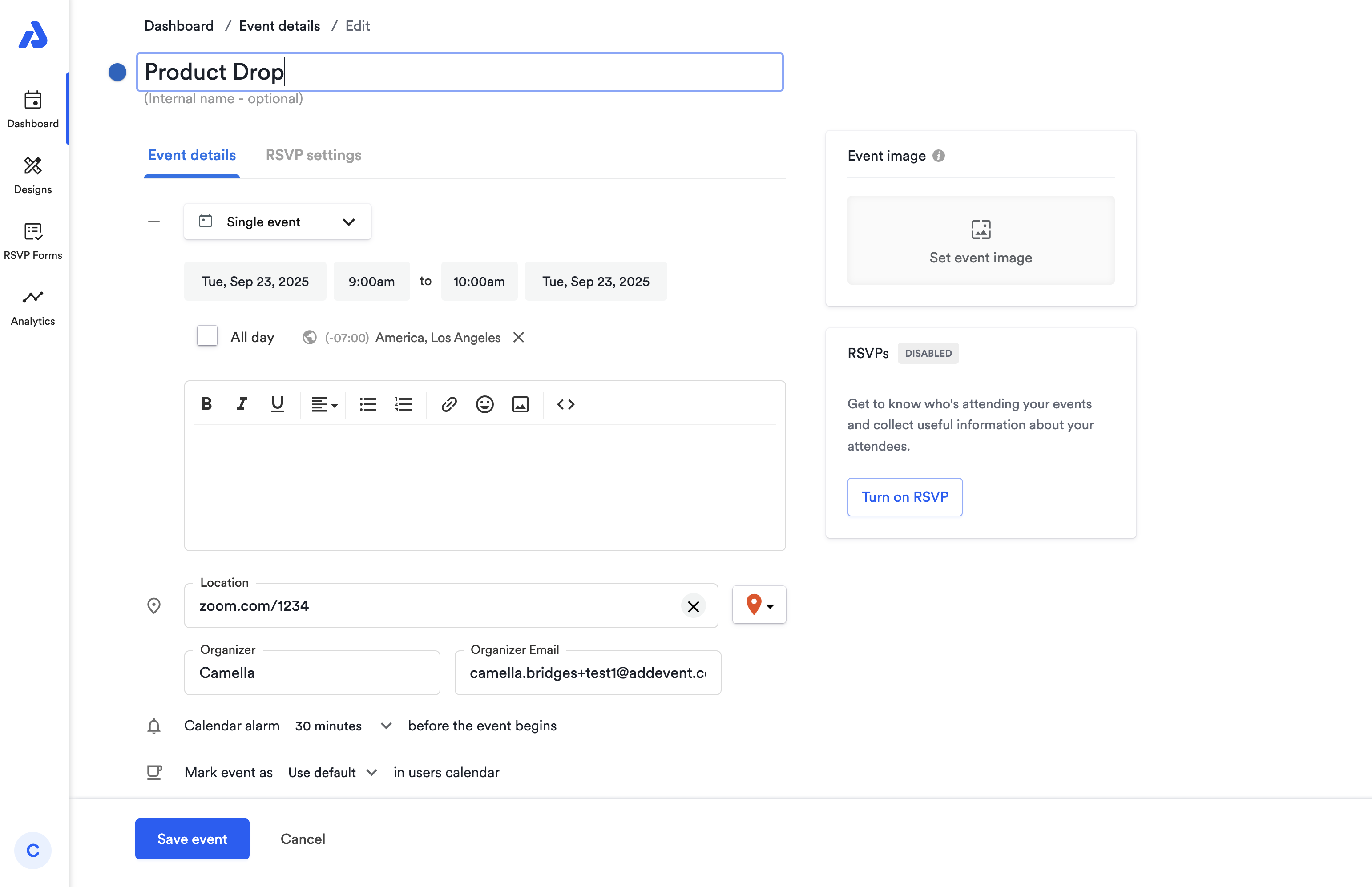Edit an Event
This help doc explains how to edit an event and what can be edited on the edit page. Editing an event in AddEvent allows you to adjust all key details of the event, including its title, date, time, location, and RSVP settings. Follow the instructions below to access the event editing page and learn what can be updated on the page.
How to Edit an Event
To edit an event, make sure the calendar containing the event you want to edit is selected.
- From the dashboard, click the event, then click the three dots, then click Edit to arrive on the editing page.

Title of your event
Enter the title of the event; this is the event title your users will see when they add it to their calendars. The best titles are brief and informative.
Internal name of event
Only you and your other account users (admin and editors) will see the internal name of the event. This is meant to help with internal organization, for instance, if you have many different events with similar or identical titles.
Date and time
To set the event date, click on the date box and select the day of the event. Set start and end times by clicking the respective boxes and scrolling through or typing in the time. For an all-day event, select All day, which removes time options and only requires the date.
Timezone
Select the timezone for the event. If uncertain, search based on the event’s location.
Recurring events
If the event is recurring, configure recurrence rules. Recurring event rules are compatible with Apple, Google, Office365, Outlook, and Outlook.com calendars. For Yahoo compatibility, we recommend creating separate events (e.g., an event series).
RSVP
If the event owner wants to collect event RSVPs, select the RSVP box. You will have the ability to edit RSVP settings once you have created the event. At that time, you will also be able to create a custom RSVP form if desired.
Event Series
Events created in a series can be changed after creation, and events can be edited/deleted individually.
Description
The description of your event that users will see when you share the event's landing page with them. It will also be included if is added to their calendars.
Location of event
The location of the event can be a link, physical address, custom location, Zoom, Google Meet, GoToMeeting, Microsoft Teams, Hopin, or any other video conference link. If the event does not have a location, you can leave this field blank.
Organizer & organizer email
The contact person for the event. If you add an organizer and an organizer email, that information will appear at the bottom of the event landing page.
Notifications
Push notifications may be sent by the user’s calendar app as reminders before the event.
Event Landing Page
The landing page for the event that you can share with your users. You can create and use customized landing pages, or you can simply use the default landing page option that is provided.
Calendar
Select which calendar the event will appear on. If the event is on a shared calendar, see here for calendar syncing times.
Busy/Free
Choose whether the event will appear as Busy or Free on your attendees' calendars. If unsure, select Use default setting so users can decide.
Click here to see what happens when you edit an event that has already been shared.
Updated 3 months ago
